Final Days at Birla House: Gandhi’s Peace Mission Through Fasting and Prayer
- EIH User
- August 16, 2024
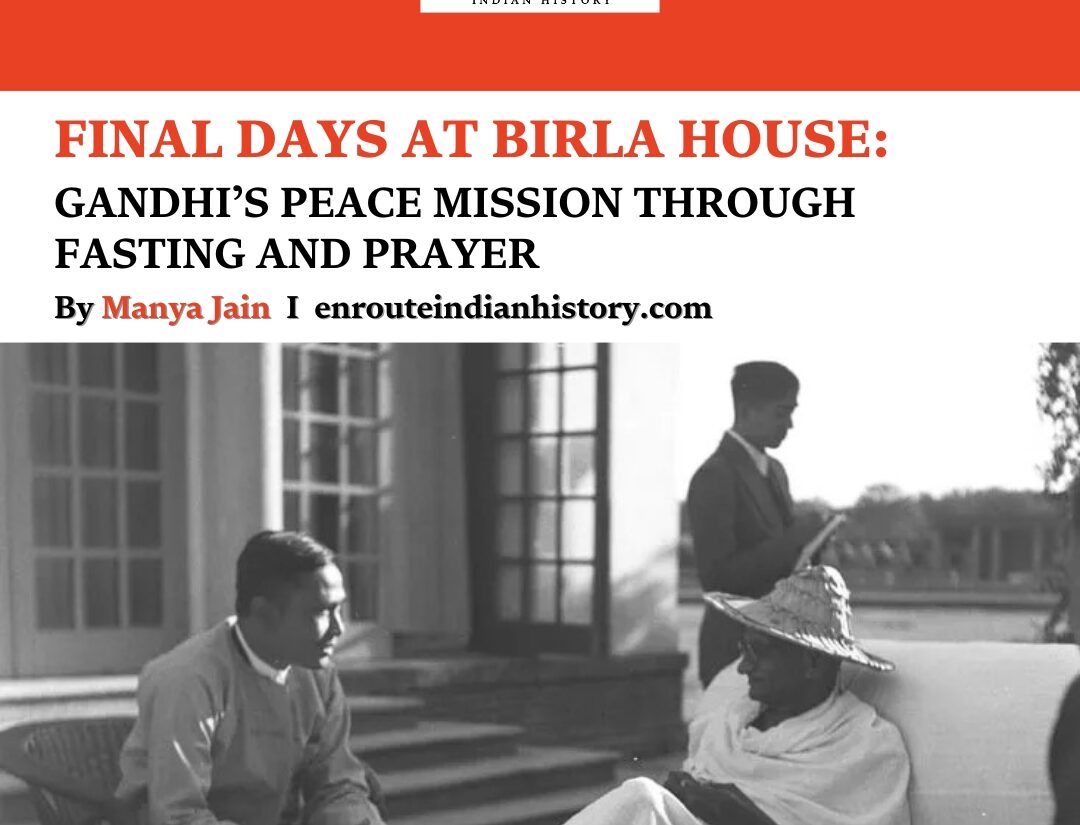
Birla House
Birla House, now known as Gandhi Smriti, is a historically significant residence in New Delhi. Originally owned by the prominent industrialist Ghanshyamdas Birla, this house became the final abode of Mahatma Gandhi, where he spent the last 144 days of his life. The residence gained profound historical significance as the site where Gandhi was tragically assassinated on January 30, 1948. Following his death, Birla House was transformed into a museum dedicated to preserving Gandhi‘s life and legacy. Today, Gandhi Smriti serves as a poignant reminder of Gandhi‘s role in India’s struggle for independence, showcasing artifacts and memorials that reflect his enduring influence on the nation and the world.
Final Days at Birla House: Gandhi’s Peace Mission Through Fasting and Prayer
During the final days of his life, Mahatma Gandhi resided at Birla House in New Delhi, where his primary focus was on healing the deep wounds inflicted by the Partition of India. The communal violence that erupted following the Partition deeply troubled Gandhi, as he saw it as a betrayal of the principles on which India’s freedom struggle had been fought. Despite his advanced age and frail health, Gandhi tirelessly worked to bring peace to a nation torn apart by hatred and violence. He met with leaders from different communities, urging them to end the violence and foster a spirit of brotherhood, emphasizing the need for unity and compassion in a time of deep national crisis.
One of the most significant actions Gandhi took during his final days was his fast-unto-death, which began on January 13, 1948. This fast was a powerful statement and a last resort to stop the riots in Delhi, aimed at compelling both Hindus and Muslims to abandon their hatred and violence. Gandhi demanded that all communities pledge to live together in peace and that refugees be allowed to return to their homes without fear. The fast sent shockwaves throughout the nation, temporarily halting the violence. Leaders from various communities, fearing that Gandhi’s death would further destabilize the fragile state of the nation, pledged to maintain peace. On January 18, 1948, after receiving assurances from leaders that communal harmony would be restored, Gandhi broke his fast.
Gandhi’s days at Birla House were also marked by his routine of daily prayer meetings, which were open to people of all faiths. These meetings, held in the garden of Birla House, became a symbol of Gandhi’s commitment to religious unity and nonviolence. The gatherings were not merely religious in nature; they were platforms for Gandhi to address the pressing issues of the day, using these occasions to advocate for reconciliation and to remind his followers of the ideals of truth and nonviolence. Despite his deteriorating health, Gandhi continued to lead these meetings with unwavering dedication, reinforcing his belief that spiritual and moral fortitude were crucial in the face of the challenges confronting the newly independent nation.
Pyarelal’s “Mahatma Gandhi: The Last Phase“ offers a deeply personal and detailed account of Gandhi’s final days, illustrating the physical, spiritual, and emotional struggles he faced as he continued his mission for truth and nonviolence. The communal violence following the Partition was a direct challenge to the vision Gandhi had fought for throughout his life. His efforts during these final days, particularly the fast, were deeply connected to the broader strategies and ideals that had driven the Indian independence movement. Gandhi’s concept of swaraj (self-rule) was not just about political independence from British rule but also about moral and spiritual freedom. This vision guided Gandhi throughout his life, and he used the same nonviolent methods—fasting, prayer meetings, and moral persuasion—to resist the forces of hatred and division that were threatening to tear the nation apart.
The tragic culmination of Gandhi’s efforts came on January 30, 1948. That evening, as Gandhi was walking to the garden for his prayer meeting, he was approached by Nathuram Godse, a Hindu nationalist who opposed Gandhi’s policies, particularly his efforts to secure better treatment for Muslims in India. Godse fired three bullets at close range, fatally wounding Gandhi. According to some accounts, Gandhi’s last words were “Hey Ram” (Oh God), reflecting his spiritual mindset even in his final moments. His assassination shocked the nation and the world, marking a profound loss for humanity. Gandhi, who became a global symbol of peace and nonviolence, was mourned worldwide. The spot where he fell, now marked by a small memorial within the grounds of Birla House, has since become a place of pilgrimage.
Gandhi’s assassination did not mark the end of his influence; rather, it underscored the enduring relevance of the ideals he championed throughout his life. His final days at Birla House are a powerful reflection of the principles that guided the Indian independence movement, reminding us that Gandhi’s struggle was not just against colonialism, but also against deeper evils like hatred, division, and injustice. His life’s work, as well as his death, serves as a reminder of the ongoing challenge to build a just and peaceful society.
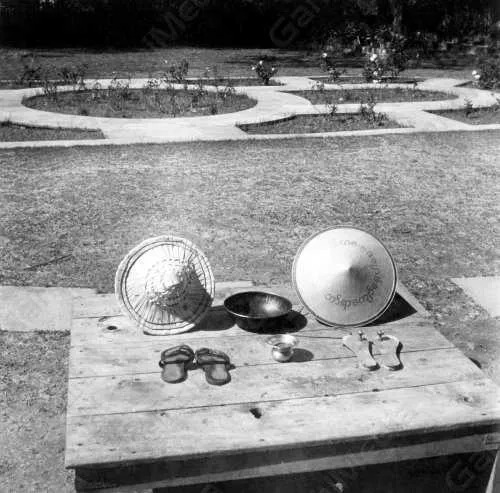
(Source: gandhimedia.org; Left: Noakhali Hat, gifted in 1946. Right: Burmese Hat, presented by Thakin Nu.)
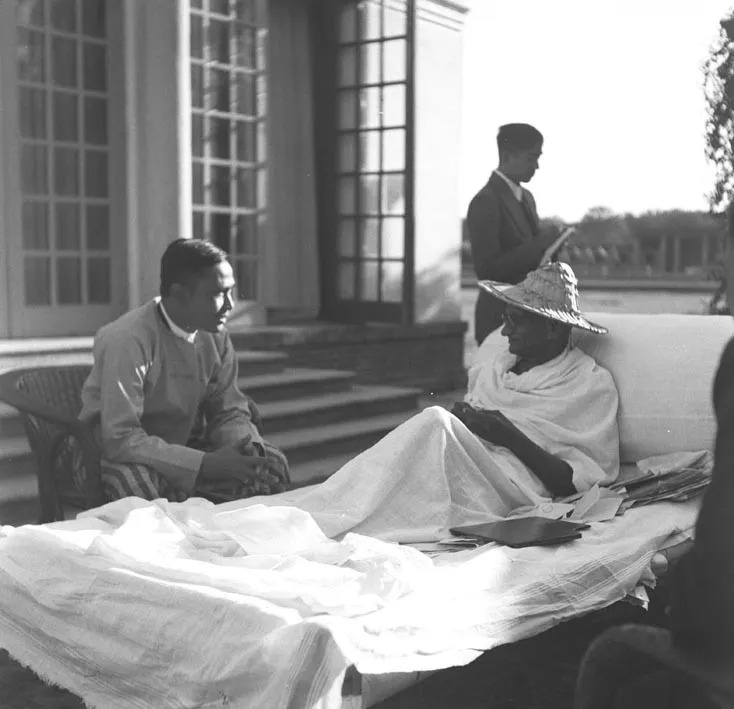
(Source: photodivision.gov.in, commons.wikimedia.org; The famous Noakhali Hat, gifted to Gandhi by a farmer during his peace mission in Bengal’s Noakhali in 1946, was worn by him during his final days at Birla House, New Delhi. This hat symbolizes Gandhi’s commitment to communal harmony. In contrast, the Hat of Burma, presented by Burmese Prime Minister Thakin Nu, arrived in New Delhi on January 31, 1948, a day after Gandhi’s assassination. Thakin Nu had visited Gandhi at Birla House in December 1947, and while the Burmese hat was intended as a gesture of solidarity, Gandhi never had the opportunity to wear it.)
Preserving the Legacy
Gandhi Smriti, formerly known as Birla House, stands as a poignant tribute to Mahatma Gandhi’s life and legacy. After Gandhi’s assassination on January 30, 1948, the Government of India acquired Birla House, where he spent his final days. In 1971, the house was converted into a memorial known as Gandhi Smriti, or “Gandhi’s Memory.” This transformation was not just about preserving a building; it was about preserving the essence of Gandhi’s life, his teachings, and the profound impact he had on India and the world.
Walking through the gates of Gandhi Smriti, visitors are immediately struck by the serenity that pervades the grounds. The large bungalow, once the residence of industrialist G.D. Birla, now serves as a place of reflection and education. Gandhi’s presence is felt throughout the property, from the simple room where he slept to the prayer ground where he held his daily meetings. These spaces have been meticulously preserved, allowing visitors to step back in time and experience the environment in which Gandhi lived his final days.
One of the most significant sites within Gandhi Smriti is the Martyr’s Column, located on a large lawn in front of the house. This is the exact spot where Gandhi was assassinated, and it has become a place of pilgrimage for those wishing to pay their respects. Visitors often remove their shoes and walk solemnly to the column, tracing the footsteps of Gandhi’s final walk. The lawn, peaceful and inviting, offers a place for quiet contemplation, where one can reflect on the events of that fateful day.
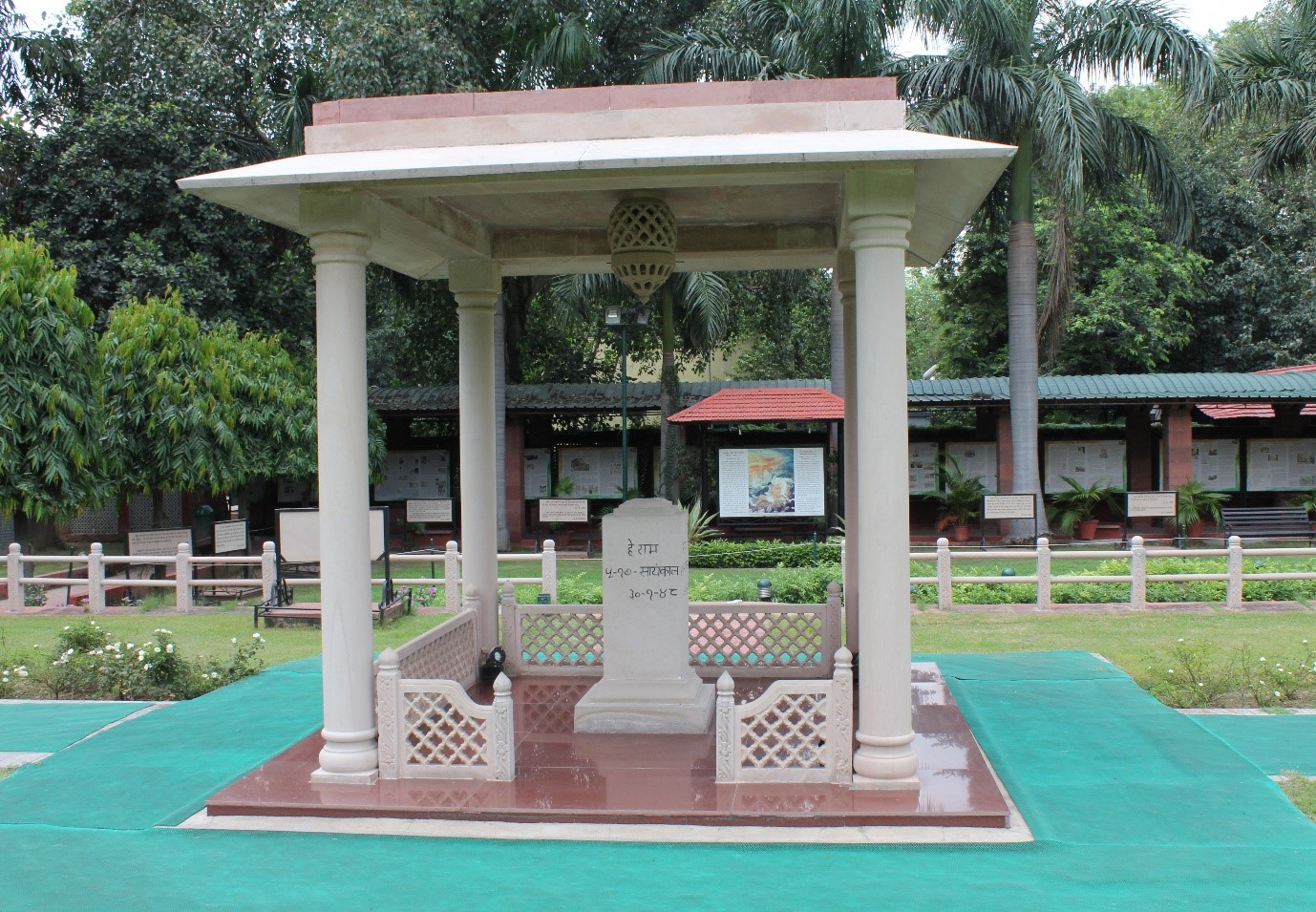
(Source: http://gandhismriti.gov.in/about-us/gandhi-smriti; Martyr’s Column)
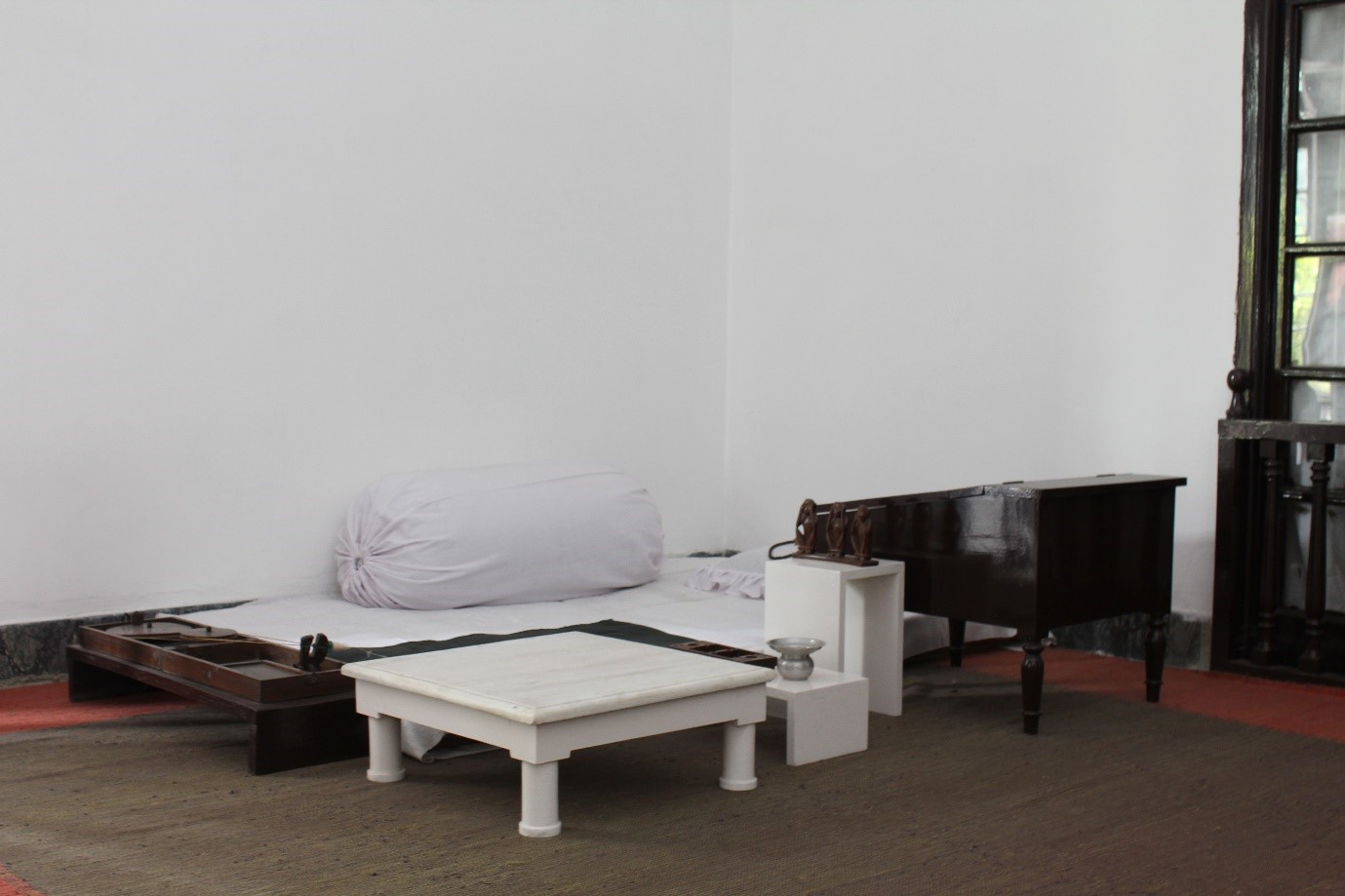
(Source: http://gandhismriti.gov.in/about-us/gandhi-smriti; Gandhi’s Room)
Inside the house, Gandhi Smriti houses an array of exhibits that provide a comprehensive look at Gandhi’s life, his contributions to India’s independence, and his unwavering commitment to social justice. The museum displays many of Gandhi’s personal belongings, including letters, photographs, and even a jail card from his first imprisonment. These artifacts offer a tangible connection to Gandhi’s journey, from his birth and education to his work in South Africa and his pivotal role in India’s freedom struggle.
One of the most moving aspects of the museum is the series of exhibits dedicated to Gandhi’s final day. A room within the bungalow narrates the events of January 30, 1948, through photographs and written accounts, including first-person narratives by foreign journalists who were present at the time. These narratives provide a powerful insight into the atmosphere of that day and the shock and sorrow that followed Gandhi’s assassination.
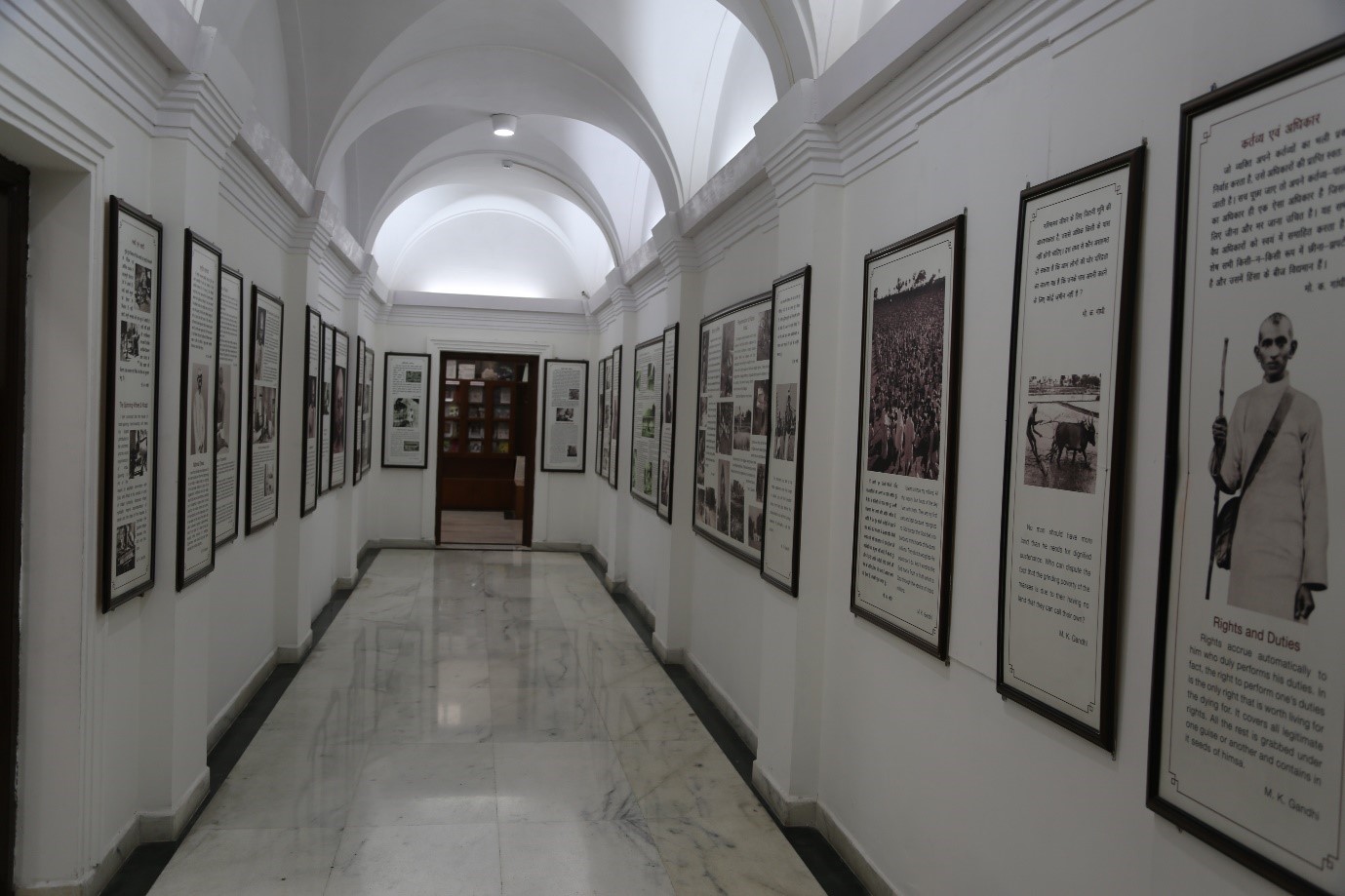
(Source: http://gandhismriti.gov.in/about-us/gandhi-smriti; Gandhi Smriti Gallery)
The museum also features a documentary on Gandhi’s life, which runs throughout the day in a large hall. This film serves as an educational tool, summarizing Gandhi’s journey and the principles that guided him. On the floor above, additional exhibits delve deeper into various aspects of Gandhi’s life, though some may find these displays less cohesive in their presentation.
Gandhi Smriti is not just a memorial; it is a living reminder of the ideals that Gandhi embodied—truth, nonviolence, and the relentless pursuit of justice. It continues to draw visitors from around the world, each seeking to understand more about the man who played a crucial role in shaping modern India. For those who walk through its halls and gardens, Gandhi Smriti offers a profound and moving experience, that underscores the enduring relevance of Gandhi’s teachings in today’s world.
SOURCES-
Gandhi Smriti Official Website
“The Life of Mahatma Gandhi” by Louis Fischer
“Mahatma Gandhi: The Last Phase” by Pyarelal
https://www.hindustantimes.com/india-news/birla-house-a-visit-to-the-mahatma/story-NSnVLxneLE6am2Jpm9wt3L.html
https://timesofindia.indiatimes.com/travel/things-to-do/a-visit-to-gandhis-place-of-death/articleshow/66317824.cms
The Story of Two Hats by Anukriti Gupta
- Birla House historical restoration
- Birla House restoration efforts
- Cultural conservation at Birla House
- Gandhi assassination site preservation
- Gandhi's final days historical site
- Gandhi's last days at Birla House
- Historical significance of Birla House
- Independence movement and Birla House
- Preserving Gandhi's heritage Birla House
- Restoring Gandhi's legacy Birla House

















